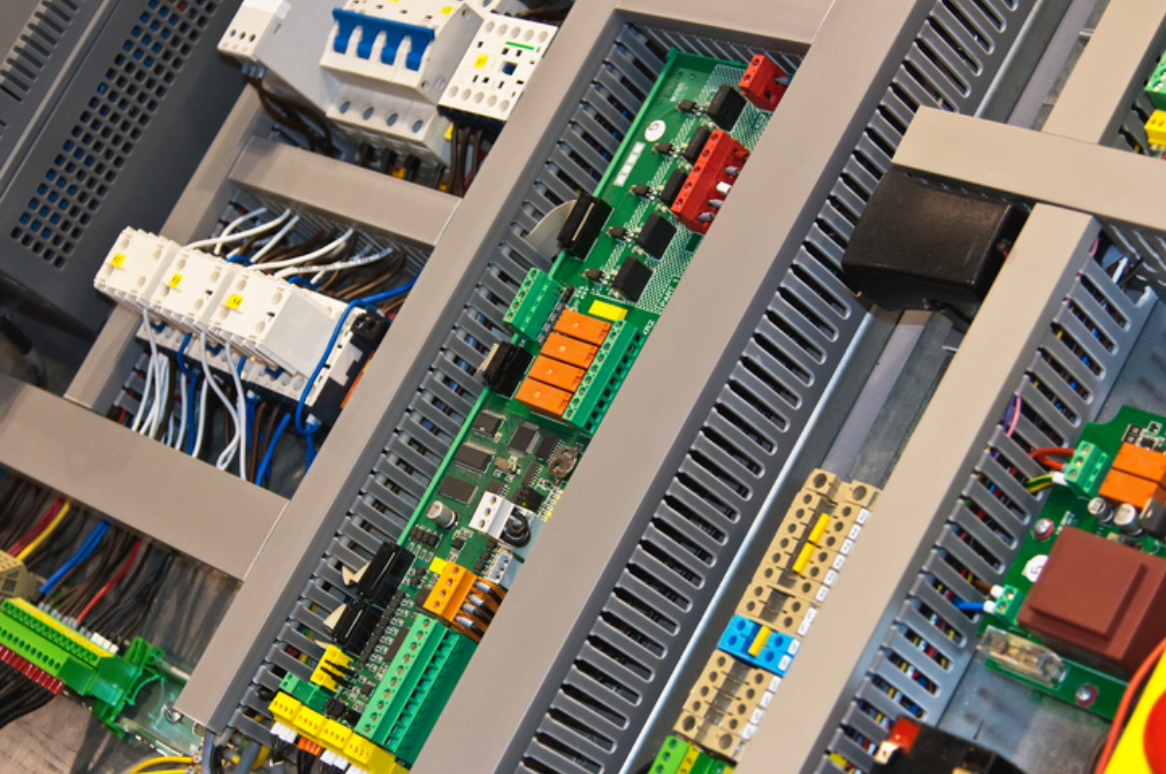Cooling Industrial Control Panels: 4 Best Practices
 Industrial control panels house valuable electrical and electronic equipment which must be protected from excess heat. Components, such as PLCs, VFDs, transformers, and power supplies, are designed to operate within an optimal temperature range, and often these temperatures are exceeded within the confines of the control panel.
Industrial control panels house valuable electrical and electronic equipment which must be protected from excess heat. Components, such as PLCs, VFDs, transformers, and power supplies, are designed to operate within an optimal temperature range, and often these temperatures are exceeded within the confines of the control panel.
When a component gets too hot, it will begin to lose efficiency, malfunction, or even fail prematurely, leading to unplanned costs and expensive downtime.
Following best practices when specifying an industrial control panel cooling system can save energy, as well as money on labor, repairs, and the life of valuable components. Ultimately, it could save the entire plant from reduced capacity or a complete shut down if critical equipment stops working or malfunctions due to excess heat and humidity.
Avoid these undesirable outcomes using these four best practices:
Begin with the end in mind
A properly designed thermal management system will keep long term operational costs lower since the electrical components inside the control panel will be operating at or below recommended temperature specifications. The time to consider the cooling requirements is during the design process for the enclosure itself.
Consider the tradeoffs between a larger enclosure, which can dissipate more heat through its surface area, and a smaller one, which costs less, saves room and may require a less expensive cooling system. When laying out components in the enclosure, consider the effects of heat generation and airflow—place VFDs and other more sensitive electronics close to the cool air inlet, for example.
Don’t forget to leave enough room for added components as the plant expands. It’s not just a case of buying a larger enclosure; the cabinet layout needs to allow for the additional equipment, and the enclosure cooling design must take future requirements into consideration.
Assess the environment
When planning an enclosure cooling system, it is critical to do a full assessment of the environment surrounding the enclosure, including high and low ambient temperatures, humidity, weather conditions (if outdoors), excessive vibration, high levels of dirt, dust, powders, flyings, etc., and the presence of liquids and vapors, such as salt spray or chlorine, which are highly corrosive.
After the survey, select the NEMA type required. NEMA, or the National Electrical Manufacturer’s Association, has specified ratings for the safe operation of equipment in different environments. Typically, the NEMA type should be the same for both the industrial control panel and the cooling system.
Enclosures in dirty or wet environments require one of the sealed NEMA types, such as NEMA 4, NEMA 4X and NEMA 12. Although NEMA 12 enclosures provide some protection against circulating dust, a sealed NEMA 4 enclosure is best for high levels of dirt and dust. Effective solutions for corrosion include using sealed NEMA type 4X enclosures that prevent ingress of corrosive vapors.
In addition to specifying the NEMA type, cooling systems that operate in high humidity should always have an effective condensate removal system.
A cooling package can be customized to operate in high or low ambient temperature settings, and may include vibration protection, extra deep filters (for heavy dust and dirt), or corrosion resistant materials and coatings.
Plan for maintenance and repairs
When planning an industrial control panel and cooling system, long term maintainability must also be considered. With the high cost of downtime, having a maintenance-friendly enclosure design is required to keep downtime at a minimum. Once the panel is installed it’s very difficult to change, therefore getting it right the first time is crucial.
Electrical component access should be easy from all directions for optimal replacement ease. In addition, accessibility to the interior of both the enclosure and the cooling system means consideration of exact locations, size and placement of both units, as well as inlets for cables.
Right sizing saves
Save money and protect your critical equipment with optimal sizing of the enclosure cooling system. First, save money upfront by not purchasing a larger enclosure cooling unit than needed. Keep long-term operating costs low and save on energy bills by selecting the most efficient system available. Plus, save on wear and tear on the equipment by not cycling too often.
To find out more about best practices for choosing an enclosure cooling solution, contact our Support Team.

